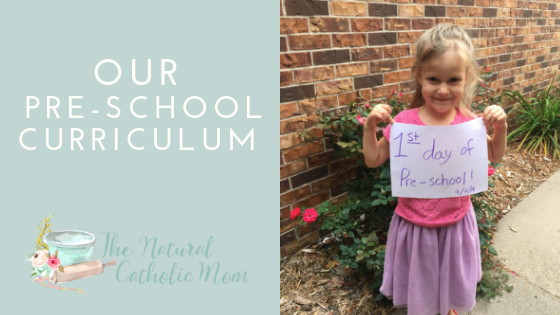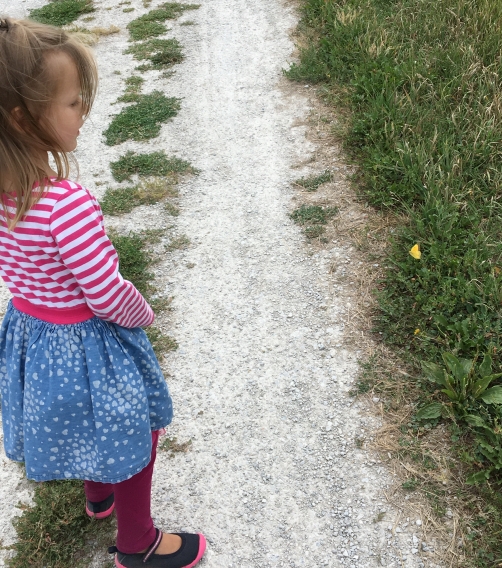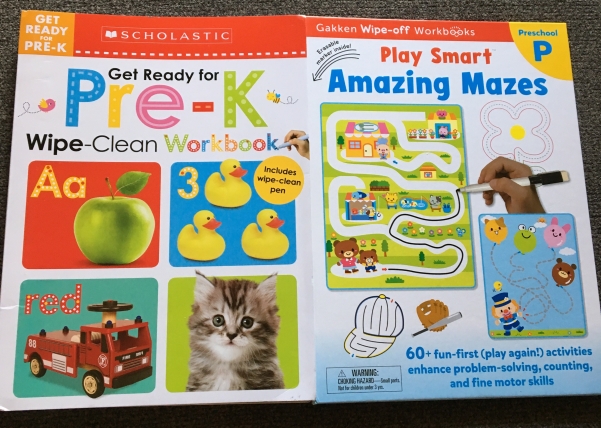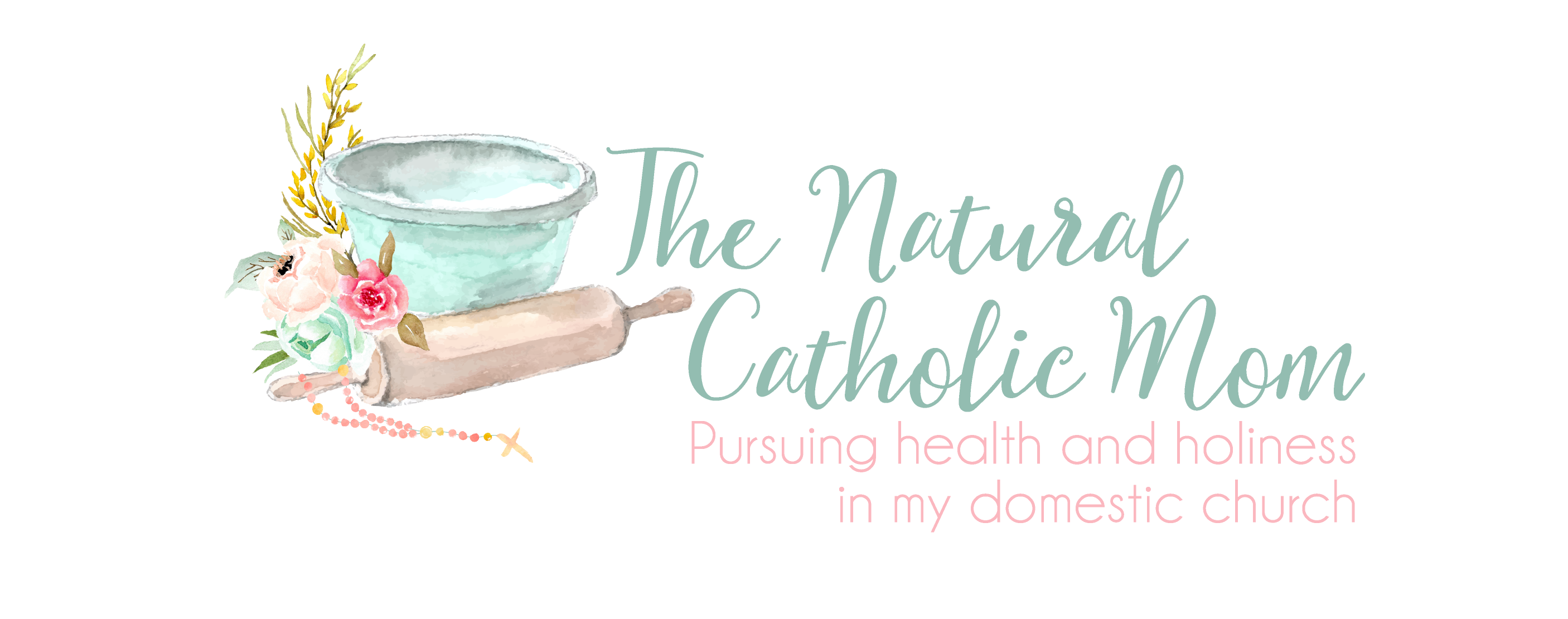
+J.M.J.+
Philomena is four years old, and very interested in school (or “skew” as it sounds when she says it!). Daddy used to be a teacher, and her best little friend is in school now, so she has been harping on me to start school herself.

However, if you know me, you know I am not one to push for formal academics at this age.
A few years ago I read the book Einstein Never Used Flash Cards: How Our Children Really Learn – And Why They Need To Play More And Memorize Less, and it confirmed what I felt in my heart about education in early childhood. I always felt naturally opposed to the Baby Einsteins culture around me but I didn’t have any backing for this feeling. This book’s well-documented research gave the statistical evidence that the never ending line of baby genius products and all of the forced early-childhood academic work and memorization do not impact overall learning capabilities and are not indicative of the older child’s academic success.
So how do young children best develop and mature so they are ready for formal education when the time comes?
Play, my friend. Play.
Play is often talked about as if it were a relief from serious learning. But for children, play is serious learning.” – Mr. Fred Rogers
Play is how children explore the world around them, develop basic social skills, and even learn self-regulation.

I’d highly recommend this entire article from Raised Good, but a favorite section of it is as follows:
Our focus on academics is skewing our perspective and leaving children sitting in their seats, while simultaneously sidelining the crucial interplay of movement and social-emotional development. Young children, at least until the age of seven, need to spend most of their time playing. They need to climb, explore and move their bodies to allow normal brain development to unfold.
Through her research, Dr. Carla Hannaford has found that the same regions in the brain that are responsible for movement are the regions that are involved in higher level thinking. She suggests that there is a link between children having plenty of time for free play involving whole body movement and their ability to perform higher level thinking such as problem-solving, creating and designing, anticipating outcomes, curbing impulses, and delaying gratification.
Underpinning this is the invisible work our children are doing on a daily basis; brain integration. The integration of the right and left hemispheres in the prefrontal cortex is critical to the development of executive functions and until this process is complete, a young child will remain impulsive because it is simply beyond their ability to do otherwise.” – Raised Good
Finding Our Sweet Spot
So: how do I reconcile my beliefs on early formal academics with a child that wants to go to school?
I am following her lead without pressure or an agenda.
For pre-school, I purchased some basic pre-k level wipe-off books like mazes and tracing, a cut-and-paste book, some lovely coloring books etc. for her to use when she wants to.
Right now there is great enthusiasm because this is new and exciting for her, but as her interests change through this school year, we will go where the play leads us.
Our Classroom Set-up
While any book work will be done at our kitchen table…

…the majority of our time will be spent in our amazing classroom – the great big wide world.
I can’t see us possibly doing more than probably 20 – 30 minutes a day total on book work for pre-k, especially when excitement from her new books wanes.
So our classroom will be a library filled with books for her to choose from, all about the changing seasons, how food grows, babies, and everything else she is interested in right now.

Our classroom is the stunning lake near our house where we chase butterflies and look at centipedes on the trail and sit by the water and watch fishermen and kayakers go by.

Our classroom in the kitchen where we cook three meals a day from scratch and the girls stir and “wash” dishes for me.

Our classroom is our church and the children’s museum and the grocery store.

Our classroom is neighborhoods we take long walks in and the park and again that kitchen table where we play with play doh and kinetic sand and color.

Societal pressure and unrealistic education expectations won’t live here, but organic learning and pursuing our interests and trying to live in tune with the Liturgical year in our domestic church will.

Our Books
If you’re interested in what books I purchased for pre-school, you can find the list below. If you click the title to any book it is linked to a Amazon or Seton, where you can purchase them.
For religion I purchased The New Saint Joseph First Children’s Bible and the Children’s Book of Saints, both by Fr. Lovasik.

I also saw this little book on virtue recommended online – Little Acts of Grace.

We have this Connect the Dots book, along with a Cut & Paste book.

The paper dot-to-dot is a little more complex than I was expecting, so we also got this simpler dot to dot wipe off book. It is a GREAT fit for a beginner with lots of basic line work and no numbers necessary to start! (Find it here on Amazon)
These wipe-off books are definitely a hit! The Get Ready for Pre-K is essentially a tracing book that includes counting, and the Amazing Mazes if by far her favorite book!

I found that when I went to our local Catholic bookstore to buy the Bible and saints book, that I didn’t like the coloring books available at all. I ordered the same old-school Catholic coloring books from Seton that I used as a kid!

Finally, I ordered this farm book on the seasons called The Year At Maple Hill Farm. This is such a cute, beautifully illustrated book, but I was disappointed at it’s length. I was expecting quite a few pages for each month when there are only a couple. It is still a very lovely little book, however.

So this is where we are as we begin our homeschooling journey. I am praying for everyone out there navigating these early years as well. God bless you.




Sounds perfect. And I love the year at maple hill farm. I even included it in my kindergartner’s homeschool plans. And not surprisingly, her kindergarten looks a lot like what you have planned. Playing inside and outside, making, and working in the kitchen are very good ways to learn!
LikeLike
It is such a cute book! I love having a kindred educator’s spirit with you ❤ God bless your kindergarten!
LikeLike
At that age we’ve also enjoyed reading lots of nursery rhyme, Mother Goose, Beatrix Potter stories, A.A. Milne’s poetry book “When We Were Young” (an essential childhood classic!) and Robert Louis Stevenson poems as well
LikeLike
We love poetry books and nursery rhymes as well!
LikeLike
Thank you for the links to the books! My daughter turned 3 this summer and as a homeschool graduate myself, we figure we will probably homeschool eventually. Yet it’s been great for me to “research” education anyway and learn more about the importance of play for children! You are echoing so much of what I’ve read and believe!
LikeLike
❤ It's so fun to find what you want to do as a family. I'm glad these could be helpful for you, Laura!
LikeLike
I love the ideas you present. I had a book that was for preschool or could be used for Kindergarten – but really never used it – probably too much for me to do. I think simple is best at this age. Bravo!
LikeLike
Thanks so much for stopping by! I’m glad this could be helpful for you ❤
LikeLike